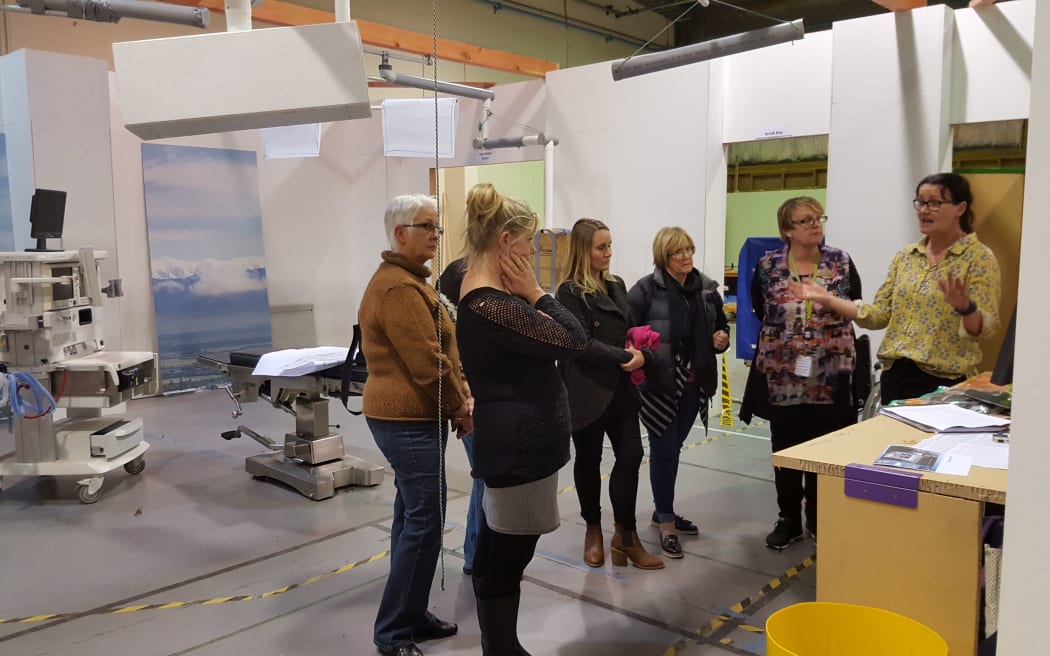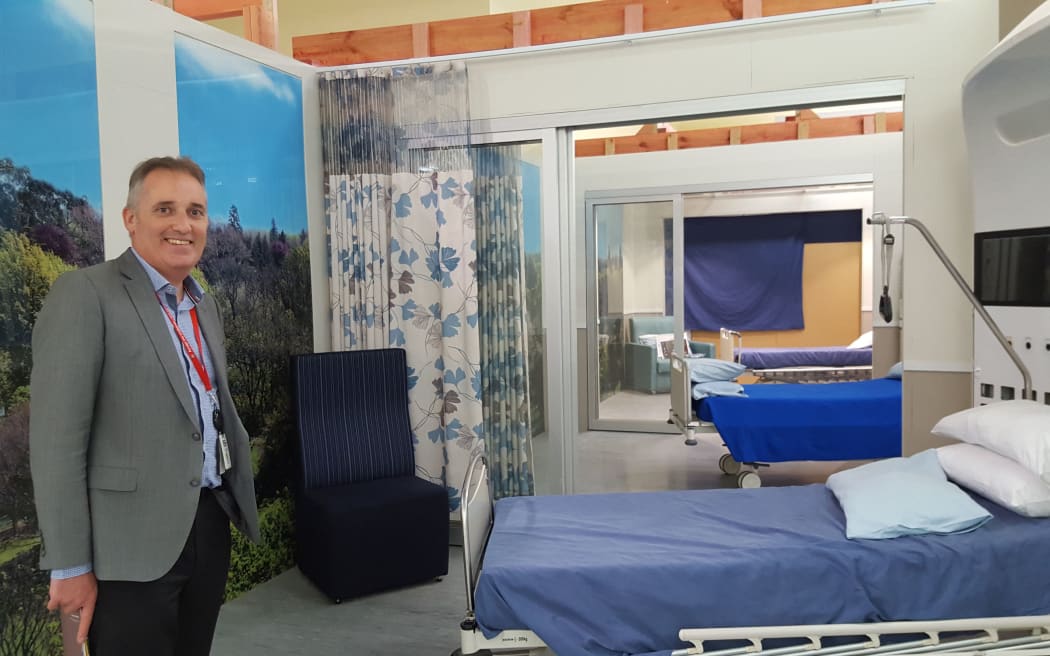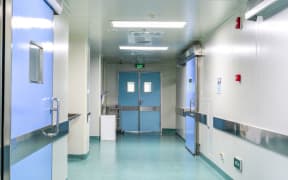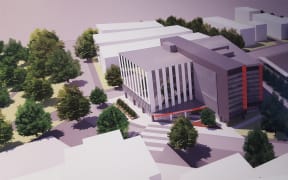In a warehouse in an industrial neighbourhood in Christchurch a mock-up hospital ward has been built, and real doctors, nurses and patients are testing out the facilities.

A team of nurses get to try out mock-ups of the operating theatres that might go into the new Acute Services Building in the Christchurch. Photo: RNZ / Rachel Graham
Last week, the new $215 million Burwood Hospital opened in Christchurch, one part of a $1 billion construction project being undertaken around the region by Canterbury District Health Board.
But even before the new rooms were built at Burwood Hospital, they had already been tested out in the Design Lab by medical staff and patients to see how they would work.
Canterbury District Health Board's Design Lab is the only one of its kind in New Zealand, and leading the way internationally, and it has drawn a steady stream of visitors from around the country and overseas.
DHB development manager Richard Hamilton it was just as well the areas were tested, because significant problems had been found.
"Issues about where the hoists are mounted in the ceiling, so rectifying that, how hoists and doorways worked together, curtains and hoists were a biggie, [and] where the sinks were located relative to beds."
"So, lots of little details that when you are looking at a plan or you are playing around with cardboard you just don't see those final details. So it was an opportunity to rectify all of those before we actually fitted out hundreds of rooms."

Richard Hamilton, the Canterbury District Health Board's development manager, in one of the mock up wards at the Design Lab. Photo: RNZ / Rachel Graham
Mr Hamilton said the Design Lab had been used over the last three years to gather information about what people wanted from the new facilities, and how they would actually function.
Once a plan is drawn up, it is built first in a rough form in cardboard, then heavier duty cardboard, and finally a full build using the actual materials.
Canterbury District Health Board chief executive David Meates said this process actually saved time and money in the long run.
"It's actually made it a lot quicker and ultimately cheaper because when you get to constructing it it has already been designed and therefore the ability to create or make errors is reduced significantly."
The day RNZ News stopped by, a group of theatre nurses was visiting the Design Lab to check out what their theatres would look like in the new Acute Services Building, which is currently under construction.
Perioperative nurse manager Mary Lory said her team was getting a proper run-through of how the operating theatres might work, and pointing out any problems which might arise.
"We were looking on the plans, and we had our linen and rubbish bins tucked around the corner, and as soon as we put them there today we realised we couldn't get access to the door very well. So luckily that is a mobile thing, so we're going, 'right, they can't live there then'. Just some things as simple as that."
Mr Hamilton said the Design Lab had also been working on an innovative new layout for wards, which would create multi-bed wards with the advantages of a single-bed room.
He said many patients like the companionship of multi-bed rooms, but don't like the loss of privacy.
The new hybrid ward has four beds in a long room, with each having their own glass door.
"There is a lot of interest around the world in what we are doing," said Mr Hamilton.
"Because effectively what we have created is every bed has its own accessway, which means every family can go in and just go to their family member. There is a clinical side and a family side, so everything is organised in that environment. We have effectively created a single room inside a multi-bedded space."
Mr Hamilton said the lab had also had plenty of interest and use from other public organisations around New Zealand including from other health boards, the Fire Service, St John, and schools, along with visitors from Europe, Asia and Australia.
He said with all of the interest in what is happening at the lab they expected to continue to be busy for many years to come.



